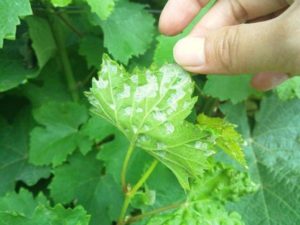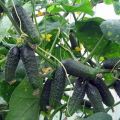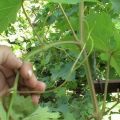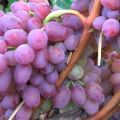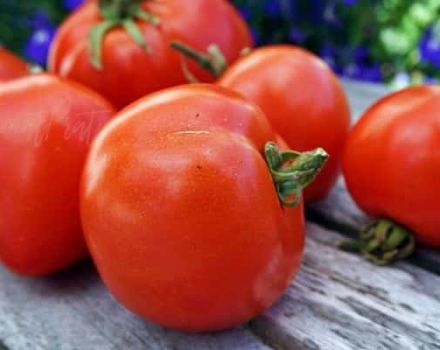Description and characteristics of the Atos grape variety, growing rules and care features
When planning to grow grape bushes on a garden plot, they study the characteristics and characteristics of varieties. Based on the description, a variety is selected that meets the requirements of a particular region. If you take into account all the rules for growing and caring for the vine in advance, you will be able to harvest the crop declared by the manufacturer and keep the plant healthy. The grape variety Atos is a hybrid species of early ripening. Its advantages are obvious, and the disadvantages are eliminated with the help of competently conducted agricultural technology.
Content
- 1 Breeding history of the species
- 2 Characteristics of grapes
- 3 The use of Atos grapes
- 4 Botanical description
- 5 Growing place
- 6 Landing rules
- 6.1 How to choose a seedling
- 6.2 Ground requirements
- 6.3 Landing scheme, landing pit dimensions
- 6.4 Fertilizing after planting
- 6.5 Care rules for good growth and yield
- 6.6 Regularity of watering
- 6.7 Loosening the soil
- 6.8 Top dressing
- 6.9 Pinching and trimming
- 6.10 Formation of a fruiting vine
- 6.11 Preparing the vine for wintering
- 7 Fruit ripening period and harvest
- 8 Fungal and infectious diseases of grapes
Breeding history of the species
The grape variety bearing the name of one of the musketeers was born in the Luhansk region. Its author is Starobelsk breeder VK Bondarchuk. He crossed two popular varieties of grapes: Codryanka and Talisman and offered seedlings for experimental cultivation. In 2012, the first fruits were collected from Athos, and it turned out that the hybrid fully confirms the characteristics declared by the breeder.
Today it occupies a leading position among winegrowers and is grown in Ukraine, in the southern regions of Russia and in the Crimea.
Characteristics of grapes
The Atos grape variety is the best choice for those gardeners who like to feast on the fruits of the vine in the summer. The hybrid belongs to early ripening, the first berries ripen on the bushes in mid-July when the weather is favorable. The average time to harvest is up to 110 days.
In addition to this advantage, there is also a sweet taste and rich aroma of berries.
The use of Atos grapes
Although the hybrid belongs to table varieties, due to its balanced composition of sugars and acids, it is successfully used to make aromatic wine. Housewives close grape juice and compotes for the winter, and the children enjoy eating ripe berries for almost the entire second half of the summer.
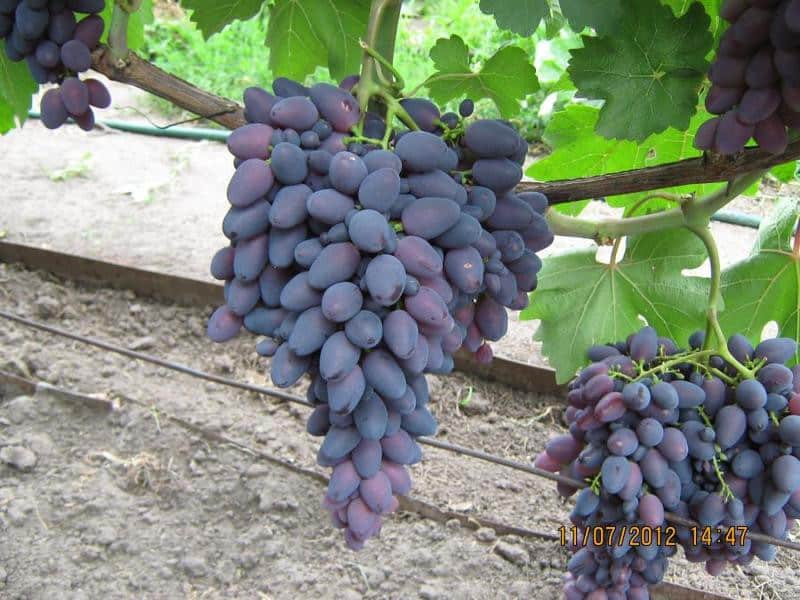
Botanical description
Before purchasing an Athos sapling, you should study its botanical description. This will help you make the right choice and take into account all the nuances of caring for the bush.
Bushes and shoots
The bushes are vigorous, when fully ripe, the shoots are brown with reddish internodes. Strong vines are characterized by almost 100 ripening per season.
Productivity and fruit description
Athos can also boast of high yields; with competent agricultural technology, up to 120-130 centners of berries are harvested from 1 hectare. The bunch of grapes is tapered and weighs up to 1.5 kilograms. In contrast to the parent variety (Codryanka), Athos has practically no tendency to pea.

The berries are large hybrids (up to 12 g), finger-shaped. The flesh is burgundy and the skin is dark blue. The taste of the fruits of Athos is sweet, crunchy when bitten, and a slight sourness is noted. The advantage of Athos berries, gardeners unanimously call the ability of the fruit to hang on the bushes for a long time, while not crumbling or cracking. Also, the advantages include good transportability of bunches.
Disease resistance
The Atos hybrid has a resistance of 7 points to the most common fungal diseases of the vine. The variety is rarely affected by powdery mildew, but from gray rot, regular prevention will have to be carried out.
Growing place
For the cultivation of Athos, a sunny area is selected, protected from drafts. This can be a place along the buildings, but at least 1.5 meters must be retreated from the wall. In a shaded area, the hybrid berries will not ripen on time and will have a sour taste and small size.
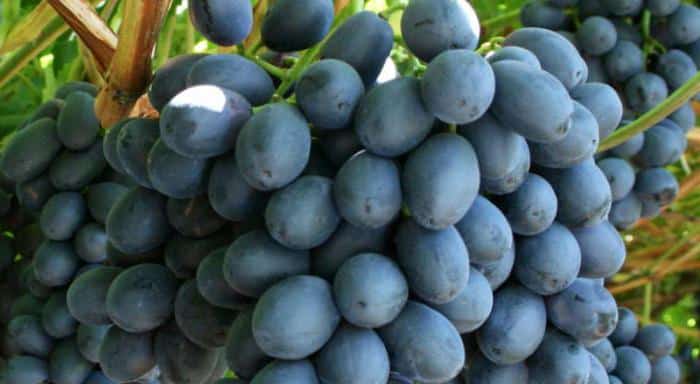
Landing rules
Before planting a hybrid, they study the planting rules in order to avoid mistakes and not harm the young bush. Experienced gardeners usually plant Atos with cuttings, and those who first decided to take up this business are recommended to purchase annual seedlings in special nurseries.
How to choose a seedling
Before purchasing planting material, carefully examine its root system:
- There should be no damage or growths on it.
- The seedling must have at least 3 roots.
- The absence of spots on the leaves and shoots is a sign of a healthy seedling.
- Do not acquire planting material with dried roots.
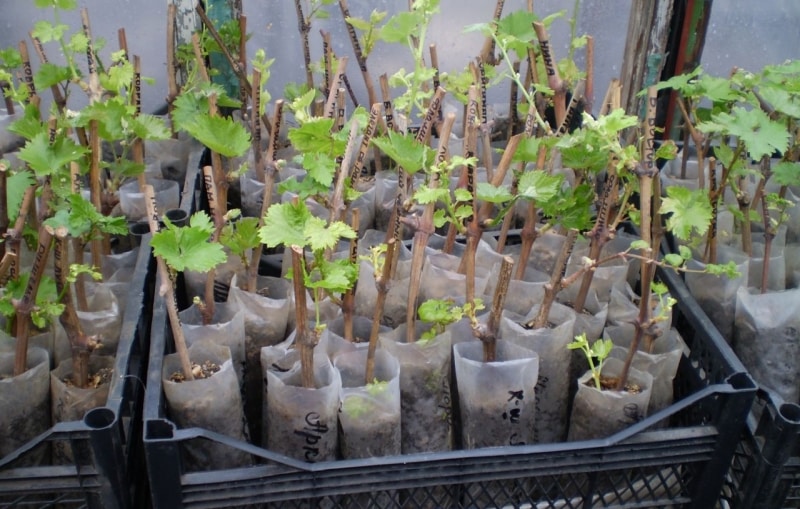
Ground requirements
A place with a close location of groundwater is not suitable for cultivating the Athos hybrid. The plant will be sore and will not yield a good harvest. If you cannot choose a suitable site, a drainage for the root system and drainage grooves are prepared so that water does not stagnate near the seedling. Athos bears fruit well on sandy loam, light soils.
Landing scheme, landing pit dimensions
The depth of the planting pit should be in the region of 70 cm. At the bottom, drainage must be made from crushed stone from broken red bricks, gravel is also suitable. So that adult bushes do not interfere with each other in the future and do not take useful components from the "neighbor", they observe a distance of 2.5 meters when planting.

You can root seedlings in spring and autumn. In the spring, this is done when the earth is completely warmed up, and in the fall no later than the third week of October.
Fertilizing after planting
Rotted manure, mixed with black soil and mineral dressings, is introduced into the planting pit. This nourishment will be enough for the seedling of Athos for the first season. Subsequently, they feed them annually three times per season:
- In the spring, mineral fertilizers with a nitrogen content are added.
- Potassium and phosphorus components are preferred before fruiting.
- Organics come in handy before preparing for winter.

Care rules for good growth and yield
Athos is not particularly picky about care, therefore it is successfully grown even by novice winegrowers. Loosening the soil and removing weeds, watering and fertilizing, forming vines and pruning are the main agronomic measures for a hybrid.
Regularity of watering
The regularity of humidification depends on the climatic characteristics of the region and the established weather. It is not worth pouring the grape bushes, this will provoke rotting of the root system, but Athos does not like overdried soil either.
Irrigation is usually carried out 4 times a season:
- In the spring before bud break.
- At the moment of flowering.
- During fruiting.
- In the complex of preparatory measures for the winter.

Loosening the soil
To improve the supply of oxygen to the roots of the grape bush, the soil is loosened after each watering. Mulching and weeding are carried out if necessary.
Top dressing
Spring feeding is combined with watering. Fertilizer granules are scattered in the trunk circle and moisten the soil. Together with the water, the nutrients will reach the roots. In summer and autumn, fertilizers diluted in water are used. Both foliar and root feeding of plants are carried out.
Pinching and trimming
A few days before flowering, pinch (remove growth points) green shoots. This will allow the fruiting shoots to receive more nutrients for the full formation of bunches. Stepchildren are also removed.

In the spring, cut into 6-8 eyes for better fruiting. Before wintering, sanitary pruning is carried out.
Formation of a fruiting vine
When forming a fruiting vine, no more than 35 eyes are left per bush or 20-22 shoots.
Preparing the vine for wintering
Before wintering, grape vines are removed from the supports, halved and tied. The soil under the bush is covered with roofing material and shoots are laid on it. A frame is installed on top, covered with plastic wrap.
It is important to ensure that the film does not touch the vines, this can lead to plant burns.
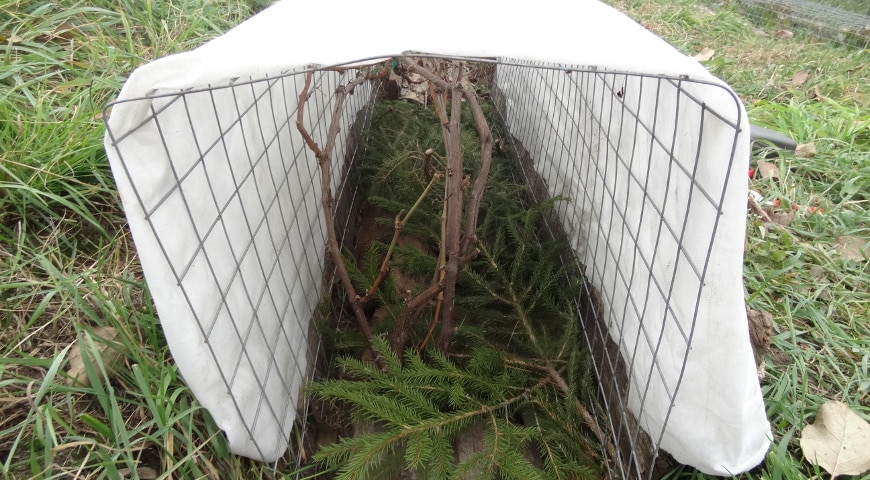
Fruit ripening period and harvest
The ripening period of the Athos grapes begins in late July and lasts until mid-August. You can take your time with harvesting, since the taste of the berries does not suffer from prolonged hanging on the bushes. In addition, they do not crack or attract wasps.
The berries, even after removing the bunch from the bush, stick tightly and do not crumble, which allows them to be transported over long distances.
Fungal and infectious diseases of grapes
The most common problem when growing the Athos hybrid is gray rot. If the disease affects the hybrid, then the treatment will take at least 2-3 years. They use drugs of the fungicidal category, such as Topsin, Boskalid, Kaptan. Downy mildew and powdery mildew rarely cause death of the Athos vine.
Methods of control and prevention of diseases and pests
As a preventive measure, hybrid bushes are treated three times per season: in spring, before flowering and after harvest. Biological products and folk remedies are used, for example, infusion of onion or garlic peels, wood ash. To prevent the berries of Athos from damaging the birds, they use nets with small meshes, and set traps for wasps and other insect pests.
